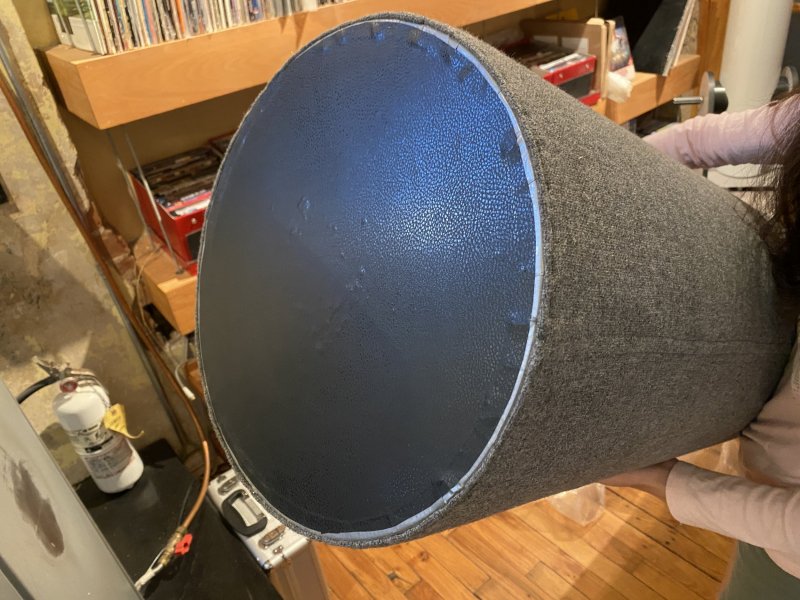MTB Vince,As I already pointed out in my two prior posts, a 4" deep fibrous velocity trap mounted flat to the wall so the reflected soundwaves pass through it twice, will be an effective absorber down to about 300Hz. That same 4" deep 2'x4' trap stood on edge in your room will only offer absorption to about 600Hz. When used freestanding without a reflective boundary, sound waves only pass through the fiber once. And to achieve the low frequency cut-offs, both these calculations assumed the sound waves approach the panel at a 45 degree angle. So nowhere near being a literal bass trap in either case.
As for your current makeshift ottoman absorber, covering the reflective leather surface with a blanket isn't really any different than placing a blanket over a flat panel TV. It does practically nothing. The 1/4 wavelength requirement for effective velocity based absorption means that even with a 45 degree incident angle for the soundwave, a 1/4" thick blanket will only fully absorb frequencies above 10kHz. If you folded the blanket over several times to achieve a thickness of 1/2" you still only have absorption down 5kHz.
I understand the passage depth advantage when absorbers are against a wall. My point is that a frictional absorber is much more effective/efficient when velocity is max which happens away from a room boundary and the room midpoint is usually a null (lowest pressure) for the lowest room modes which means the velocity is highest.
Generally these flag type of installations at room modes are impractical, but it seems they could be the most efficient placement of absorbers for bass.
Now how they act for first reflections (mids/highs) is a different story.
Evan







